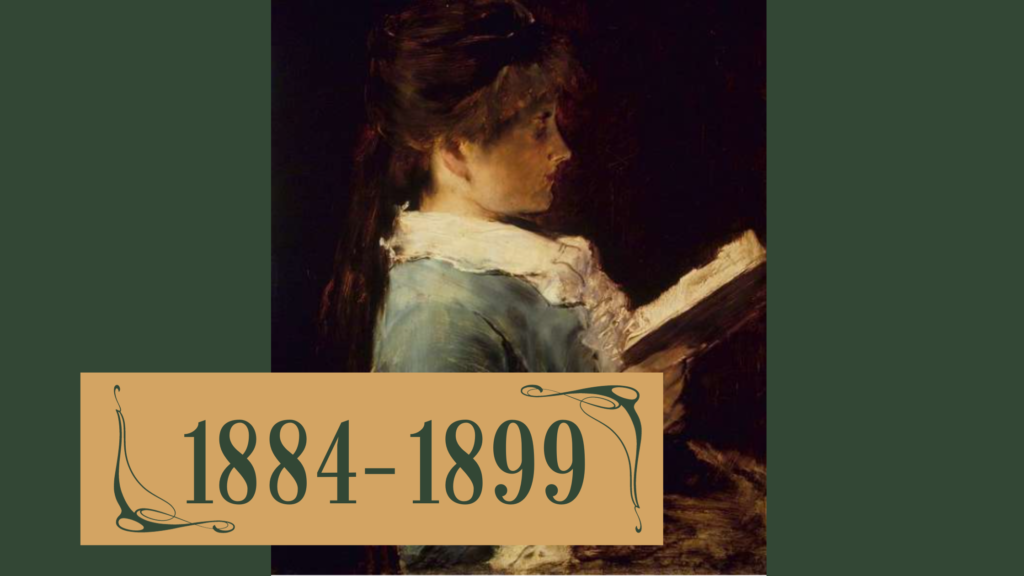We thought we’d kick off our Pasadena Public Library 140th Anniversary celebration with titles published during the Library’s first decade and a half. The classic titles below are all still available for checkout (though, sadly, the books you check out now will not look like the beautiful gilded and bound early/first editions pictured here). We offer contemporary suggestions to go along with each of these titles. After the featured titles, you’ll find a list of the bestsellers during the period 1880-1899. Happy reading!
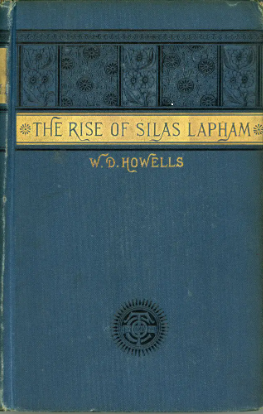 The Rise of Silas Lapham by William Dean Howells, 1885
The Rise of Silas Lapham by William Dean Howells, 1885
William Dean Howells, a prolific writer in a variety of genres, published one of his best-known works, The Rise of Silas Lapham, in 1885. A work of realistic fiction, the novel explores Bostonian society and the figure of the American businessman. Howells features two prominent Boston families in the novel, the Laphams, originally hailing from Vermont, and the Coreys, an upper-class, well-established Bostonian family. While contrasting the characters of Silas Lapham, who has earned his wealth by building his mineral paint business from the ground up, and Bromfield Corey, who has inherited his wealth and his high social standing, Howells crafts a romantic tale that centers on the young-adult children of the two men. Business ethics and the pangs of young love are intertwined in a story that simultaneously investigates the intricacies of social class in late-nineteenth-century Bostonian society.
Read Along: Try a similar treatment of “new” wealthy vs. established in New York Society with An American Beauty by Shana Abé (2023), which has a local connection: this historical novel seems to be based closely on the life of Arabella Huntington, the philanthropist of Huntington Library fame.
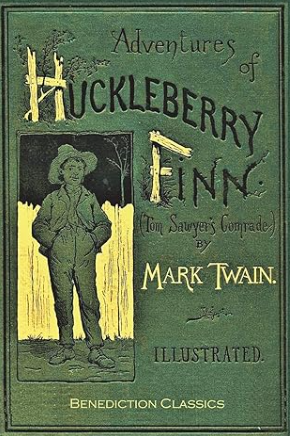 The Adventures of Huckleberry Finn by Mark Twain, 1885
The Adventures of Huckleberry Finn by Mark Twain, 1885
The book’s narrator is Huckleberry Finn, a youngster whose artless vernacular speech is admirably adapted to detailed and poetic descriptions of scenes and narrative renditions that are both broadly comic and subtly ironic.
Huck runs away from his abusive father and, with his companion, the runaway slave Jim, makes a long and frequently interrupted voyage down the Mississippi River on a raft. During the journey Huck encounters a variety of characters and types in whom the book memorably portrays almost every class living on or along the river. As a result of these experiences Huck overcomes conventional racial prejudices and learns to respect and love Jim. The book’s pages are dotted with idyllic descriptions of the great river and the surrounding forests, and Huck’s good nature and unconscious humor permeate the whole. But a thread that runs through adventure after adventure is that of human cruelty, which shows itself both in the acts of individuals and in their unthinking acceptance of such institutions as slavery. The natural goodness of Huck is continually contrasted with the effects of a corrupt society.
Read Along: Try an updated take, the 2019 summer One City One story selection, The Ballad of Huck and Miguel by Tim DeRoche, illustrated by Daniel Daniel González (2018). In this modern retelling set in SoCal, Huck escapes his abusive father in a trip down the Los Angeles River with his friend Miguel, an undocumented immigrant accused of murder.
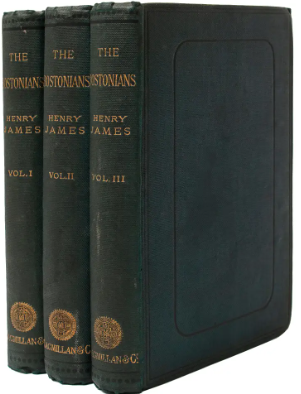 The Bostonians by Henry James, 1886
The Bostonians by Henry James, 1886
A nuanced, incisive portrayal of the women’s rights movement as it churned and gathered steam in the 1870s. Following the turmoil of the Civil War, many Boston-area intellectuals and reformers turned from the accomplished cause of abolitionism to the new quest for suffrage and other rights for women. An attractive young woman with an entrancing improvisational style of oration is discovered one evening both by a wealthy feminist aiming to propel the movement into a blazing new era and by a chivalrous, conservative Southerner who, utterly charmed, soon realizes that he is falling in love with her–and wants nothing more than to thwart her potential blossoming as a brilliant prophetess of the women’s cause. The attractions, repulsions, and agitations among these three archetypal characters lend palpable tension to a tale filled with psychological and social insight into one of the most significant eras in history, when the women of the world’s preeminent democracy first articulated the collective demand that the two sexes be treated equally, both in law and in life.
Read Along: For a read-alike based on the stylistic complexity of James with single female characters and their struggles with relationships and feminist ideals, try The Female Persuasion by Meg Wolitzer (2018), a “powerful coming-of-age story that looks at ambition, friendship, identity, desire, and power from the much-needed female lens”-Bustle.
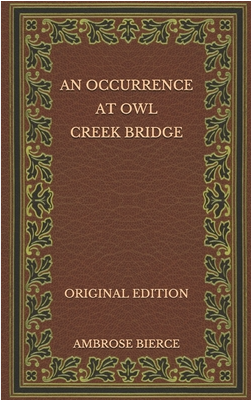 “An Occurrence at Owl Creek Bridge” [Short Story] by Ambrose Bierce, 1890
“An Occurrence at Owl Creek Bridge” [Short Story] by Ambrose Bierce, 1890
Regarded as one of the best-known short stories in American literature, “An Occurrence at Owl Creek Bridge” was initially published in the San Francisco Examiner on July 13, 1890 and then appeared in Bierce’s collection of short stories, Tales of Soldiers and Civilians (1891). Commentators describe the story as an exploration of a condemned man’s psyche during execution. The narrative concerns the final thoughts of a Southern planter as he is being hanged by Union soldiers. Although ostensibly a war story, “An Occurrence at Owl Creek Bridge” is sometimes included in supernatural anthologies for its depiction of abnormal phenomenon and has been cited as an early and significant exploration of psychology in fiction. On that note of psychology and supernatural themes, the classic TV anthology The Twilight Zone adapted the story to the small screen in an episode that aired in February, 1964 (Season 5, Episode 22: “An Occurrence at Owl Creek Bridge.”)
Read Along: Try Redeployment by Phil Klay (2014), a collection of short stories about the war in Iraq, which (fair warning!) takes readers to the front lines of the war in Iraq, asking us to understand what happened there, and what happened to the soldiers who returned. Whether in the combat zone or on the home front, these characters face life at the extremes, points where happy stories and easy answers provide no guidance or comfort. Brutality and faith, guilt and fear, helplessness and survival–the characters in these powerful stories struggle to make meaning from the stuff of chaos.
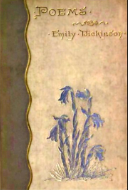 Poems by Emily Dickinson, 1890
Poems by Emily Dickinson, 1890
Emily Dickinson’s “Because I could not stop for Death,” first published posthumously in Poems: Series 1 (also known as Poems by Emily Dickinson) in 1890, is widely considered among her best work and illustrative of the poet’s genius. Dickinson is regarded as one of the best American poets in history, but her mastery of metaphor and personification and her unique style went unrecognized in her lifetime, mostly by the poet’s own decision not to seek publication. Living in a time of religious revival, she continually questioned the existence of the afterlife. In “Because I could not stop for Death,” the speaker is carried away from life by Death, a kindly coachman who stops to invite the busy speaker aboard. Although the speaker expects that her eternal home will be the grave, she is surprised when Death turns his horses toward eternity instead, though the poem ends before the coach arrives at its destination. Because the bulk of her work was first published in 1890, Dickinson’s accessible, yet deceptively complex poetry has been a constant source of fascination for readers and critics. She remains a towering literary figure, a feminist icon, and an enigma few can resist.
Read Along: A modern woman poet whose work eloquently expresses personal and cultural themes in modern-day life–try Call Us What We Carry by Amanda Gorman (2021), the young poet who wrote and recited the poem The Hill We Climb at the 2021 U.S. presidential inauguration. For themes of spirituality, particularly based in the natural world, the poetry of Mary Oliver is lyrical, emotionally stirring, and evocative.
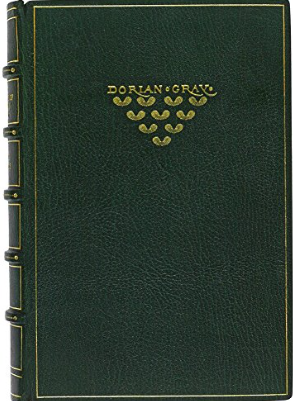 The Picture of Dorian Gray by Oscar Wilde, 1890
The Picture of Dorian Gray by Oscar Wilde, 1890
The Picture of Dorian Gray was published simultaneously in Philadelphia’s Lippincott’s Monthly Magazine and by Ward, Lock and Company in England, in July, 1890. In England, the novella was condemned by many reviewers as shocking and immoral. Wilde tried to address some of these criticisms as he worked on an expanded version of the story, which was published as a full-length novel in 1891, along with a preface in which Wilde stated his artistic credo.
The novel centers on Dorian Gray, a young man of great beauty. When he meets Lord Henry Wotton, Lord Henry inspires him with a vision of life in which the pursuit of beauty through sensual pleasure is valued above ethical or moral concerns. Another friend of Dorian, the artist Basil Hallward, awakens Dorian’s vanity. After admiring a portrait of himself painted by Basil, Dorian declares that he would give his own soul if he could remain eternally young while the portrait grows old. He gets his wish, and the picture shows the gradual disfigurement of his soul as he sinks into a life of degradation and crime.
Read Along: Dorian by Will Self (2007) (available in eBook format from hoopla with your Pasadena Public Library card) is a “shameless imitation” of Oscar Wilde’s The Picture of Dorian Gray that reimagines the novel in the milieu of London’s early-80s art scene, which for liberated homosexuals were a golden era of sex, drugs and decadence before the AIDS epidemic struck later in the decade. It is “an age in which appearances matter more and more and more. Only the shallowest of people won’t judge by them.”
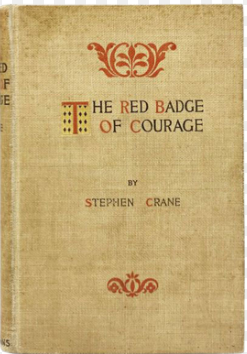 The Red Badge of Courage by Stephen Crane, 1895
The Red Badge of Courage by Stephen Crane, 1895
Born six years after the close of the Civil War, Stephen Crane was fascinated by the subject and read all materials he could find on the conflict. He found, however, that the accounts of battle were rather superficial; based solely on action, they lacked feeling. As a writer keenly attuned to human experience and emotions, Crane wanted to explore the soldiers’ emotions during battle. He created The Red Badge of Courage to expose the human side of warfare. Written when Crane was twenty-three, the novel is a realistic account of a young man’s struggle to come to terms with the brutality of war and his own fear of death and cowardice, as contrasted with romantic notions of glory through battle. Published just before the nation began the Spanish-American War, The Red Badge of Courage served as testimony to the horrors of battle on any front.
Read Along: Matterhorn by Karl Marlantes (2010) is a similar take on the wrenching realities of combat set during the Vietnam War. Written by a highly decorated Marine veteran over the course of thirty years, Matterhorn is a spellbinding and unforgettable novel that brings to life an entire world–both its horrors and its thrills–and seems destined to become a classic of combat literature.
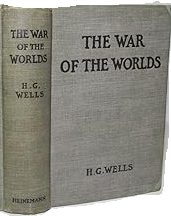 The War of the Worlds by H. G. Wells, 1898
The War of the Worlds by H. G. Wells, 1898
The story, which details twelve days in which invaders from Mars attack the planet Earth, captured popular imagination with its fast-paced narrative and images of Martians and interplanetary travel. The humans in The War of the Worlds initially treat the invasion with complacency but soon are provoked into a defensive state of war.
The novel helped launch the career of Orson Welles when he presented an adaptation of it on his radio program, “The Mercury Theatre on the Air,” on Oct. 30, 1938. The simulated news broadcast of a Martian landing in New Jersey, complete with regularly updated news bulletins, caused a widespread panic among listeners.
Read Along: At least, a 20th Century take, if not fully modern–The Martian Chronicles by Ray Bradbury (1950). A milestone of American literature, Bradbury’s classic collection of interconnected vignettes about life on the red planet diverges from the War of the Worlds theme, in which humanity must defend its shores against its neighbors, for in Bradbury’s prismatic vision, humanity is the conqueror, colonizing Mars to escape an Earth devastated by atomic war and environmental catastrophe. The Martian Chronicles is a haunting prophesy of humanity’s destiny to bring our old dreams and follies along with us wherever we may venture forth.
Bestsellers in the U.S. 1880-1899
Pride and Prejudice by Jane Austen
Wuthering Heights by Emily Bronte
Robinson Crusoe by Daniel Defoe
A Tale of Two Cities by Charles Dickens
The Pickwick Papers by Charles Dickens
The Adventures of Sherlock Holmes by Arthur Conan Doyle
The Interpretation of Dreams by Sigmund Freud
Tess of the d’Urbervilles by Thomas Hardy
Barrack Room Ballads by Rudyard Kipling
Moby Dick, or The Whale by Herman Melville
Works of William Shakespeare by William Shakespeare
Dracula by Bram Stoker
The Time Machine by H.G. Wells
The Picture of Dorian Gray by Oscar Wilde

